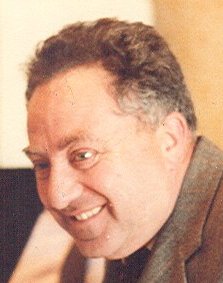Biography:Anatolii Goldberg
Anatolii Asirovich Goldberg (Russian: Анатолий Асирович Гольдберг, Ukrainian: Анатолій Асірович Гольдберг, Hebrew: אנטולי גולדברג, April 2, 1930 in Kyiv – October 11, 2008 in Netanya) was a Soviet and Israeli mathematician working in complex analysis. His main area of research was the theory of entire and meromorphic functions.[1]
Life and work
Goldberg received his PhD in 1955 from Lviv University under the direction of Lev Volkovyski. He worked as a docent in Uzhgorod University (1955–1963), then in Lviv University (1963–1997), where he became a full professor in 1965, and in Bar Ilan University (1997–2008). Goldberg, jointly with Iossif Ostrovskii and Boris Levin, was awarded the State Prize of Ukraine in 1992.
Among his main achievements are:
- construction of meromorphic functions with infinitely many deficient values,
- solution of the inverse problem of Nevanlinna theory for finitely many deficient values,
- development of the integral with respect to a semi-additive measure.
He authored a book (Goldberg Ostrovskii) and over 150 research papers.
Several things are named after him: Goldberg's examples,[2] Goldberg's constants,[3] and Goldberg's conjecture.[4] [5]
Selected publications
- Goldberg, A. A.; Ostrovskii, I. V. (1970) (in Russian). Distribution of values of meromorphic functions. Moscow: Nauka., translated as Goldberg, A. A.; Ostrovskii, I. V. (2008). Distribution of values of meromorphic functions. Providence, RI: Amer. Math. Soc.. ISBN 978-0-8218-4265-2. https://www.ams.org/publications/authors/books/postpub/mmono-236.
References
- ↑ Zarīchniĭ, M. M.; Skaskīv, O. B.; Sheremeta, M. M. (2008). "Anatolīĭ Asīrovich Golʹdberg (April 2, 1930–October 11, 2008)" (in Ukrainian). Mat. Stud. 30 (2): 214. http://www.vntl.com/im/pdf/30_2_214_214.pdf. Retrieved January 5, 2012.
- ↑ Hayman, W. K. (1964). Meromorphic functions. Oxford: Clarendon Press. https://archive.org/details/meromorphicfunct0000haym.
- ↑ W. Bergweiler and A. Eremenko, Goldberg's constants
- ↑ Langley, J.K. (1997). "On the zeros of the second derivative". Proc. R. Soc. Edinburgh Sect. A 127 (2): 359–368. doi:10.1017/S0308210500023672.
- ↑ Yamanoi, K. (2013). "Zeros of higher derivatives of meromorphic functions in the complex plane". Proc. London Math. Soc. 106 (4): 703–780. doi:10.1112/plms/pds051.
External links
- McTutor history of mathematics archive. http://www-history.mcs.st-and.ac.uk/Biographies/Goldberg.html.
- Anatolii Goldberg at the Mathematics Genealogy Project
- Eremenko, A.; Ostrovskii, I.; Sodin, M. (1998). "Anatolii Asirovich Gol'dberg". Complex Variables, Theory and Application 37 (1–4): 1–51. doi:10.1080/17476939808815121. http://www.math.purdue.edu/~eremenko/dvi/official.pdf.
- The International conference on complex analysis and related topics dedicated to the 90-th anniversary of Anatolii Asirovich Goldberg (1930-2008)
 |


